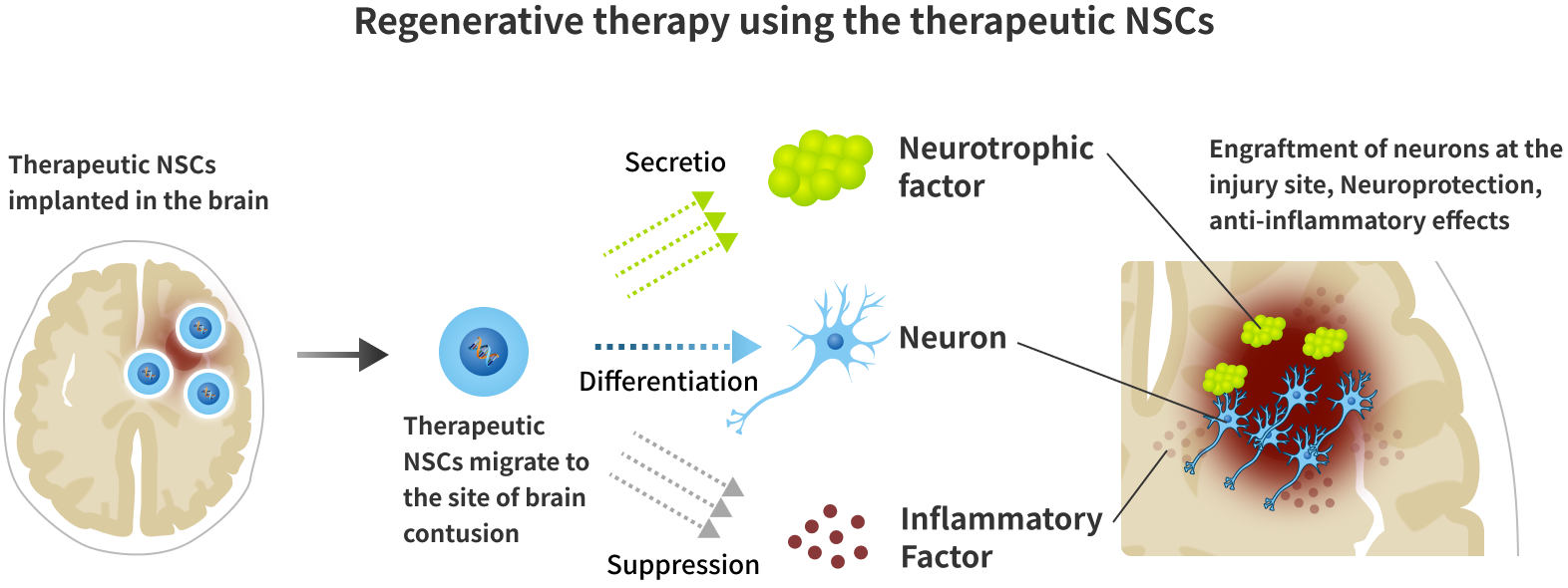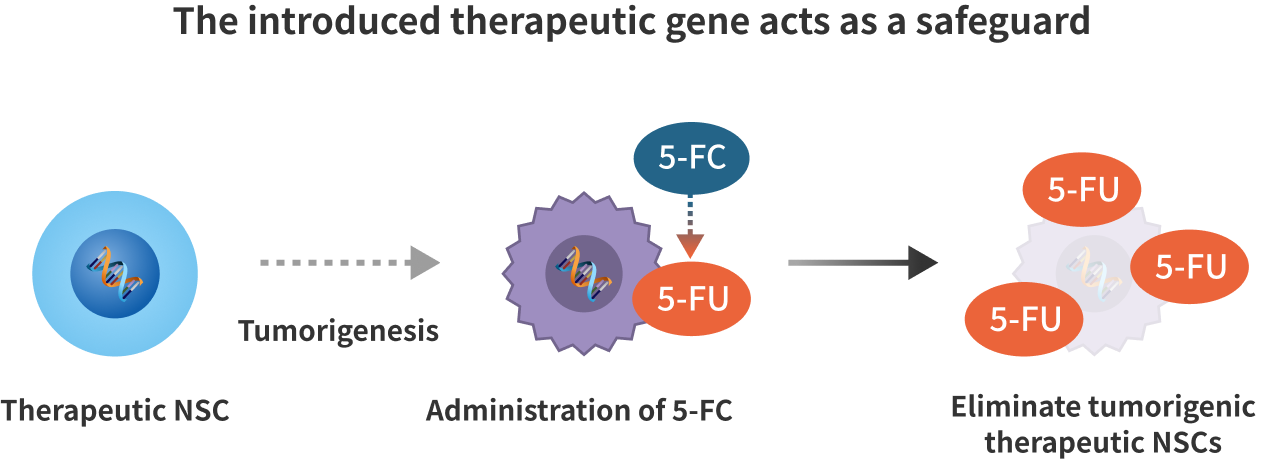Brain Injury
Disease Description
Traumatic brain injury is an injury to the head caused by an external force that destroys brain tissue and results in brain dysfunction. Although the development of emergency medical care has improved the life-saving rate, treatment for brain dysfunction after the subacute stage is limited to rehabilitation, making it difficult for patients to return to society.
Current Therapies
Cellular therapies using mesenchymal stem cells (MSC) and neural stem cells are under development for the treatment of this disease. These therapies are mainly based on the trophic effects of neurotrophic factor secretion to promote nerve regeneration and neuronal cell protection.
In order to further enhance the therapeutic effect, regenerative medicine is expected to promote the reconstruction of the nervous system through the migration and engraftment of implanted cells to the site of injury, in addition to the trophic effect. However, human-derived neural stem cells present significant challenges in obtaining the cells themselves and preparing large numbers of cells.
Pluripotent stem cells such as iPS cells and ES cells have the potential to solve these issues, but there is a risk of tumorigenesis. Cells to be administered into the brain must be sufficiently safe, and a mechanism must be in place to quickly eliminate them if they develop effects different from those expected.
Our therapeutic approach
We are developing therapeutic NSCs, which are induced by differentiation from iPS cells and can be produced in mass production in a stable process. In addition, the therapeutic gene has the CD-UPRT gene, so that even if the implanted cells become tumors or have unexpected effects, the administration of the prodrug 5-FC can kill the implanted cells themselves. In other words, it is possible to realize regenerative medicine with a safety device.


